Table of Contents
QUICK SUMMARY:
Measuring brand awareness helps track how well your marketing campaigns connect and deliver results for your clients. This article covers the key metrics and KPIs your agency needs to prove impact and build client confidence.
Building brand awareness used to be simple. A TV commercial, a newspaper ad, or a catchy radio jingle could do the trick. But those days are gone. In their place? Algorithms, audience segments, and endless platforms make cutting through the noise harder than ever.
Brand awareness is about more than being seen for small or growing businesses—especially those entering new markets. It’s about being remembered, trusted, and chosen. Running a campaign is only half the battle. The real challenge? Showing clients you’re delivering results.
This guide explains how to measure brand awareness effectively so your agency provides tangible proof that your strategies are making a difference.
The Importance of Measuring Brand Awareness
Strong brand awareness strategies are the foundation of impactful marketing. A recent Nielsen report found that 27% of marketers rank brand awareness as extremely important. Why? Because brand awareness helps drive smarter decisions and sharper marketing efforts.
Spot What’s Working: Imagine your client’s sales are stagnant, but their brand awareness metrics are climbing. That clearly signals that something else (e.g., pricing) might need a second look.
Find Missed Opportunities: Are there gaps in messaging? Is engagement falling flat? Awareness metrics connect the dots, giving you a chance to pivot and refocus.
Conduct Competitive Analysis: Where does your client shine? Where do they need to catch up? Brand awareness metrics offer the context to compare and the insights to improve.
Strategically Plan for Future Campaigns: Awareness data doesn’t just reflect past performance; it lights the path forward, helping you build stronger strategies, reach your client’s target audience, increase brand awareness, and form lasting partnerships.
Social media is a powerful tool for building brand awareness and engaging with customers, and we believe it's an essential component of any digital marketing strategy.
Adam Binder, Founder & CEO, Creative Click Media
Brand Awareness vs. Reach
Reach is all about numbers. If 10,000 people scroll past your post, congratulations, you’ve got reach! But did they stop? Did they care? That’s where reach ends, and awareness begins.
Think about that moment you spot McDonald’s glorious golden arches four hours into a family road trip. It’s not just a meal—it’s a feeling. The comfort of knowing exactly what you’ll order. How it will smell. And the satisfaction of that first bite.
So, when do you lean into each?
Reach is like an opening act—those big, splashy moments when you’re trying to raise brand awareness and get people to notice you. It's surface-level but important nonetheless.
Brand awareness goes deeper. It’s not just about being seen—it’s about being remembered.
G2 cites that 33% of brands use paid advertising to personalize experiences and boost brand awareness. These marketing strategies turn recognition into brand recall and spark the kind of personal connections that make brands unforgettable.
10 Key Brand Awareness Metrics and KPIs to Track
Metrics are how agencies turn “trust us, it’s working” into actual proof. They’re the hard numbers—like reach, impressions, and shares. KPIs zoom out to determine whether those numbers are moving the needle toward bigger goals. These brand awareness metrics and KPIs don’t just explain what’s happening—they show your clients why it matters.
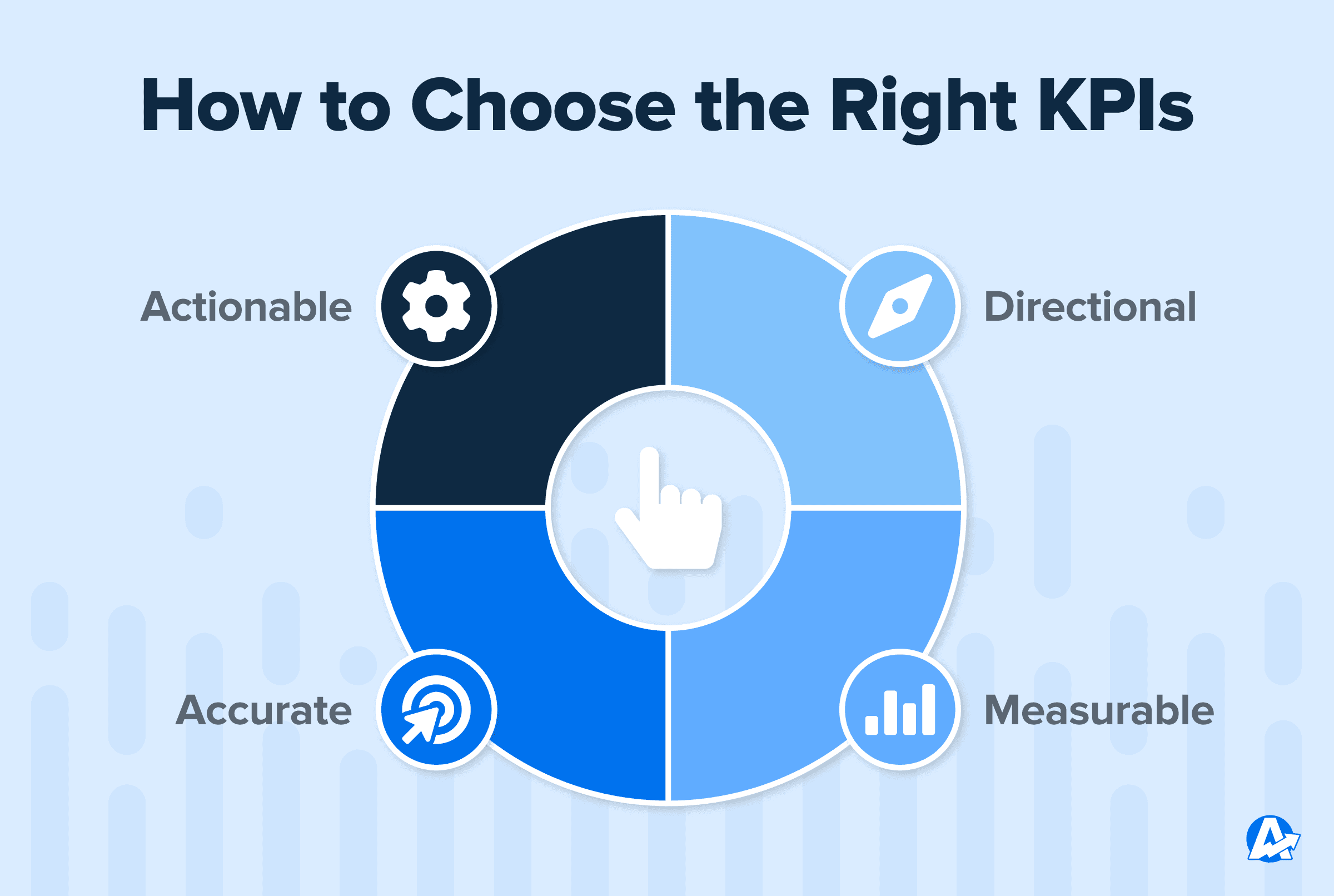
1. Social Media Followers
For brands, social media followers represent more than bragging rights. They’re future customers and brand advocates. They’re people who hit “Follow” after reading a witty tweet, a relatable Instagram post, or out of good old-fashioned curiosity.
A steady increase in followers proves that your social content is connecting—helping build brand awareness and expand brand recognition. Keep an eye out for spikes during campaigns. Those moments reveal what resonates, giving you the insights to double down on what works.
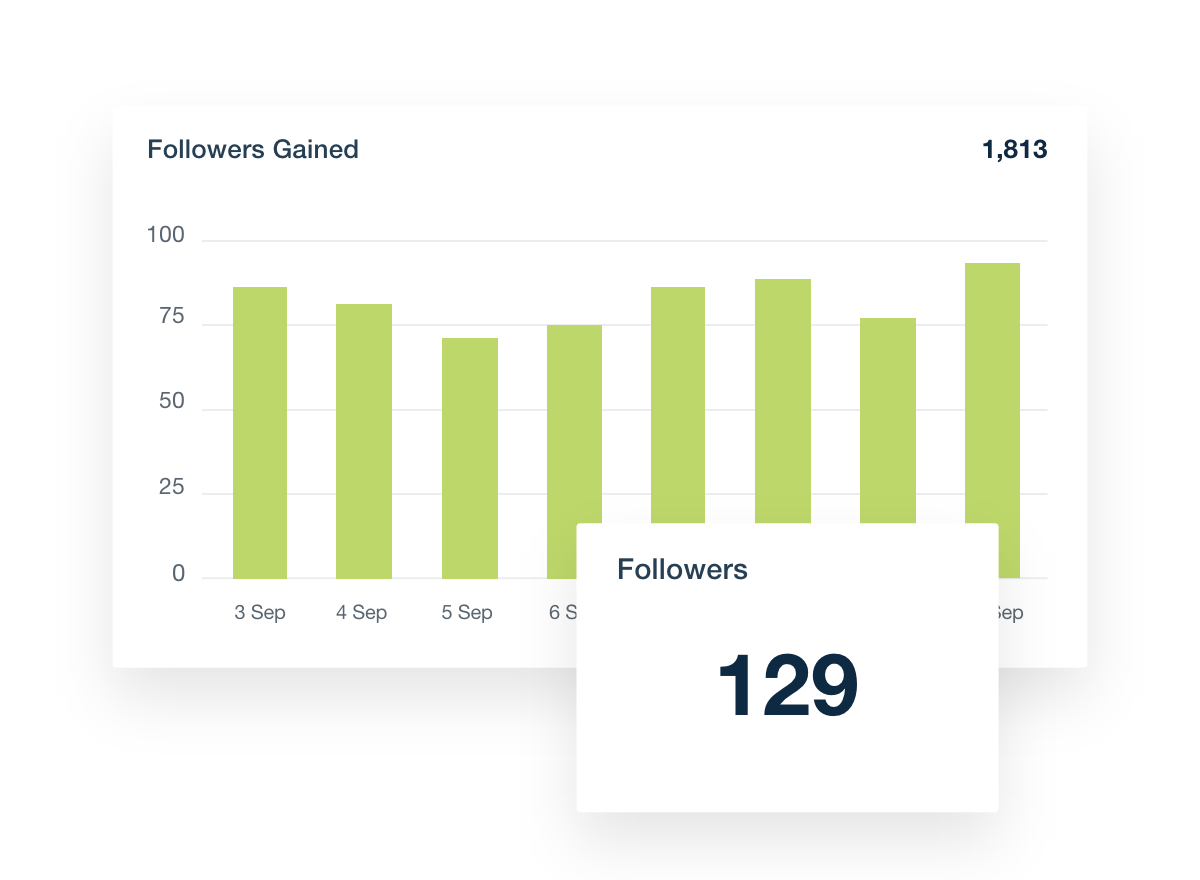
2. Impressions
Impressions are all about visibility. Every time content shows up on someone’s screen—whether it’s an Instagram ad, blog preview, or promoted tweet—it counts as an impression. It doesn’t matter if they interact with it or keep scrolling. The point is your client’s brand is showing up and getting noticed.
This metric is especially important for tracking campaign reach. High impressions mean your client’s content lands in front of their target audience. Think of it as planting seeds of recognition that grow into long-term brand awareness. Impression data helps you answer questions like:
Which platforms are performing best?
Are certain campaigns getting more attention?
Use these insights to guide tactical adjustments and keep your client top-of-mind with their target audience.

3. Engagement
Engagement is where your client’s audience stops scrolling and starts interacting. Every like, comment, share, or save on social media platforms proves the content is hitting its mark.
This shift from passive spectators to active participants is where connections deepen, and trust takes root. High engagement rates show the audience isn’t just noticing the brand—they’re forming a relationship with it.
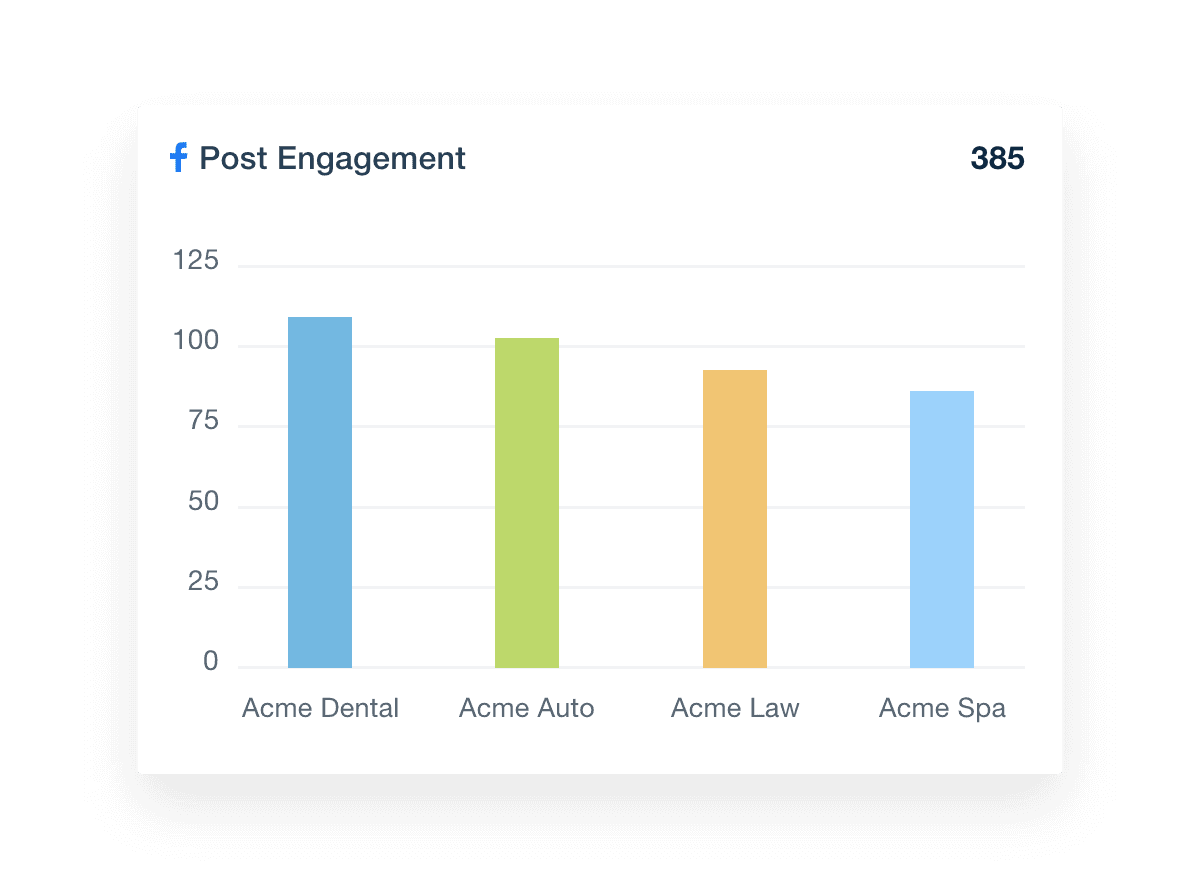
Each of our clients and campaigns has specific goals that they want to achieve. We choose the most relevant metrics to track the performance of these campaigns. For example, when building brand awareness, we track a few key metrics, such as follower growth and engagement.
Bri Bernard, Director, Studio Blackardt
4. Video Views
Videos bring a brand’s message to life in a way that feels personal and real. A TikTok that entertains. A YouTube explainer that informs. A customer story that inspires.
Video content creates connections and video views measure the impact. Views are more meaningful than impressions because they show the audience didn’t just scroll past—they stopped—even for a moment. That pause is the first sign a video is doing its job: grabbing attention.
How to track video views:
Use tools like YouTube Studio, Instagram Insights, or TikTok Analytics.
Focus on metrics like average watch time and drop-off points to see what’s holding viewers’ interest (or losing it).
Compare performance across platforms to find where your target audience is tuning in most.
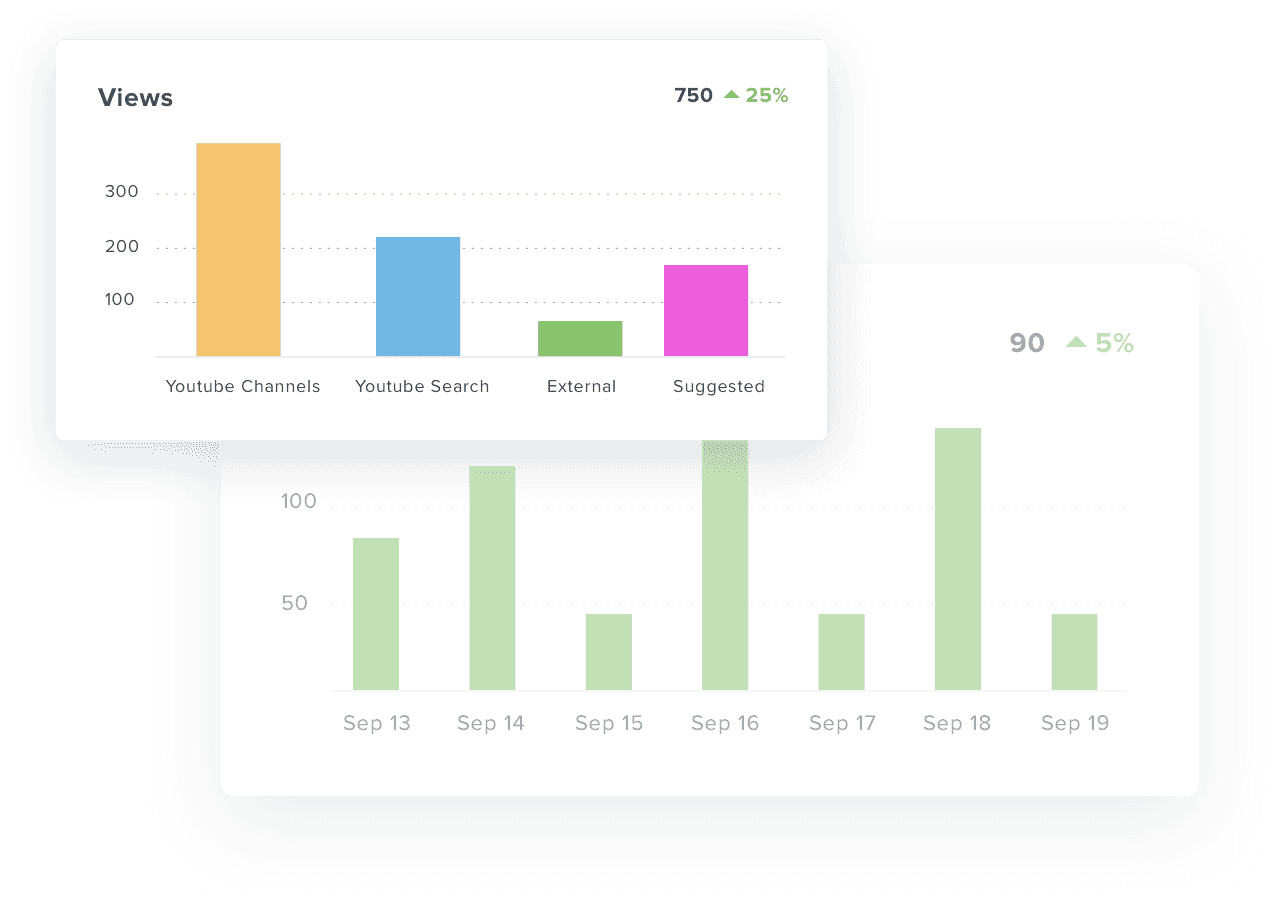
5. Brand Mentions
Brand mentions show where people talk about your clients and how they are perceived. A Twitter tag, a glowing Yelp review, or a feature in a “Top 10” blog post—all of these moments provide insight into a brand’s presence in the public eye.
They’re also a window into organic reach. Positive reviews on Trustpilot or a trending Twitter thread build credibility and awareness. On the flip side, a Reddit thread full of common complaints might signal an issue worth addressing.
Mentions—both good and bad—help you gauge brand perception and uncover opportunities to strengthen its reputation.
How to track brand mentions:
Set up Google Alerts for your client’s brand name, key products, or services to catch mentions in blogs, news sites, or forums.
Use social listening tools and platforms like Hootsuite or Brandwatch to track tags, hashtags, and conversations on Twitter, Instagram, and Facebook.
Check Google Trends for spikes in interest around the brand name or campaign-related terms.

AgencyAnalytics tracks data from 80+ platforms in one place, saving you time and letting you focus on driving results for your clients. Try it free today!
6. Referral Traffic
Referral traffic shows how visitors land on your client’s website from external sources, such as guest blogs, news articles, or social media posts. It measures the brand’s ability to capture attention and drive interest outside of its own channels.
A spike in traffic from a press release or influencer collaboration signals a win, while underperforming sources show opportunities for improvement. How to measure referral traffic:
Use Google Analytics to find referral traffic reports under “Acquisition.”
Identify top-performing sources, like partnerships, media mentions, or social campaigns.
Track trends over time. Did a recent guest blog or shared post lead to a spike in activity?
We use Google Analytics audiences to ensure we serve our ads to the right target audiences without spending recklessly. These campaigns are incredibly useful for website traffic and brand awareness. They keep the top of our marketing funnel full.
Sara Kremm, Sr. Paid Media and Conversion Specialist, OTM
Referral traffic insights reveal the impact of external efforts and guide your agency on where to focus next.
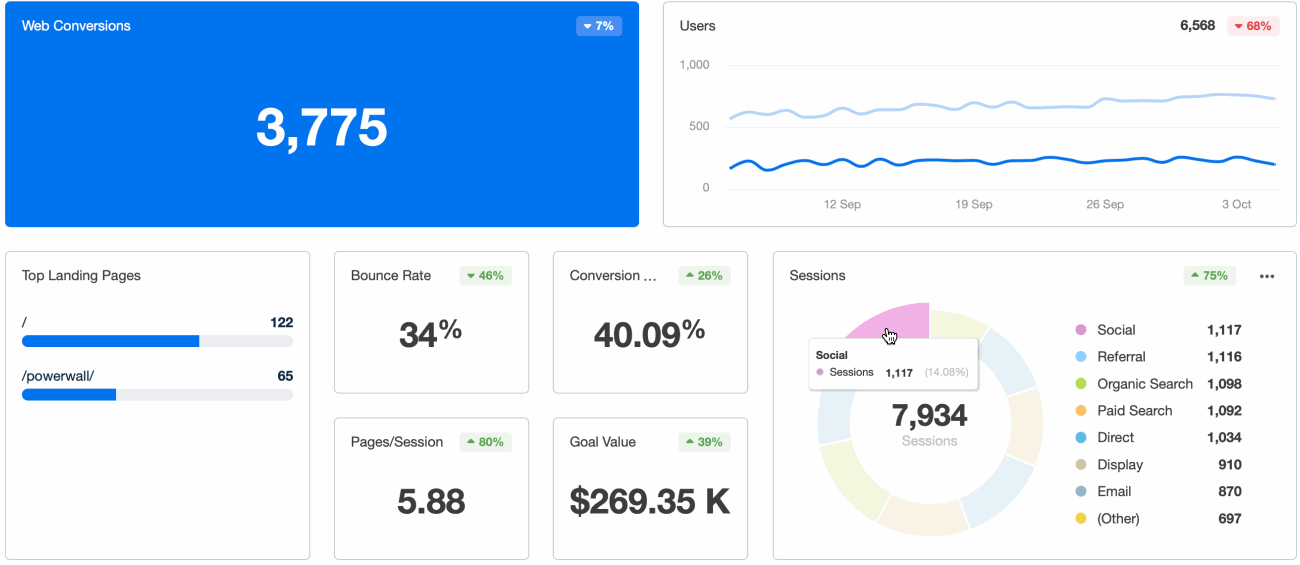
7. Branded Search
A branded search happens when someone directly types your client’s name into Google. No detours. No distractions. Just a focused search for them.
An increase in branded searches is a clear signal that your campaigns are working. The message is landing, the audience is connecting, and—most importantly—they’re remembering. It’s the ultimate proof of effective brand awareness, showing people recognize the name and are eager to learn more.
Here’s how to measure it:
Check Google Search Console for branded keyword trends. Spikes after a big marketing campaign or product launch? That’s proof your brand awareness efforts hit the mark.
Use tools like Semrush or Ahrefs to track branded search volume over time and see how your client’s search visibility stacks up against the competition.
Agency Tip: Save time and impress clients with AgencyAnalytics’ client report templates. With clear, professional reports, you easily track and share your client’s brand performance.
8. Share of Voice
Share of Voice (SOV) is essentially a popularity contest for brands. It measures how much of the market conversation your client owns compared to their competitors. Are they dominating the chatter on social media? Racking up positive online reviews? Or are they blending into the background while someone else steals the spotlight?
Share of voice correlates more directly with brand awareness and affinity. Brand strength drives higher average tickets and higher conversion rates. Branded searches also typically have higher click-through rates.
Vi Wickam, President, Wizard of Ads Online
High SOV means your client isn’t merely part of the market; they’re leading the conversation.

Here’s how to measure it:
Use share of voice tools like Semrush to compare your client’s search visibility against competitors.
Try social listening platforms like Brandwatch or Talkwalker to see how often your client’s name is mentioned versus the competition.
Agency Tip: Pay attention to spikes to see if recent campaigns or product launches shifted the balance in their favor—and adjust accordingly.
9. Backlinks
Backlinks are essentially digital endorsements. However, not all links are created equal. When the source is reliable and respected, backlinks do more than direct traffic. They build credibility and signal to search engines that your client is an authority worth noticing.
The impact is undeniable. The top result in Google averages 3.8 times more backlinks than those ranked below it. Even a single backlink from a high-authority site will make a noticeable difference in rankings. So, how do you secure them?
Build Relationships: Connect with industry leaders on LinkedIn, attend events, and engage meaningfully with their content.
Create Link-Worthy Content: Publish resources like in-depth guides, original research, or infographics that others want to share.
Guest Blogging: Write for reputable sites and naturally include links to your client’s content where relevant.
Fix Broken Links: Use tools like Ahrefs to find broken links on high-authority sites, then suggest your content as a replacement.
Leverage PR: Respond to journalist requests on platforms like Qwoted to secure backlinks from trusted media outlets.
Monitor and Recover Lost Links: Use tools like Semrush to track lost backlinks and reach out to restore them.

10. Customer Reviews
Customer reviews are honest snapshots of your client’s brand, straight from the people who matter most: their customers. Handling those reviews—the glowing ones and the tough love—is a big part of shaping their reputation. Why? Because 89% of consumers check reviews online before making a purchase.

Here’s how to track them:
Monitor and Aggregate Reviews: Tools like GatherUp or Trustpilot integrations make tracking reviews across multiple platforms easy.
Dive Into Social Conversations: Use tools like Brandwatch or Hootsuite Insights to capture brand mentions tied to reviews and discussions happening beyond traditional review sites.
Spot the Trends: Are reviews getting better after campaigns? Are recurring pain points popping up? These patterns will guide your next move.
Brand awareness surveys are a great alternative for newer brands without many reviews. A brand awareness survey helps measure how well the audience recognizes and connects with the brand, giving you the insights you need to steer strategy.

Stop wasting hours switching between platforms to collect your client’s campaign data. AgencyAnalytics brings all your key social media metrics into a single, easy-to-use dashboard. Start your free 14-day trial today.
How to Track Brand Awareness Campaigns in AgencyAnalytics
Tracking brand awareness campaigns shouldn’t feel like a game of guess-and-check. With powerful integrations and customizable dashboards, AgencyAnalytics’ centralized platform reduces time spent on reporting, wows clients with visually appealing displays, and shows exactly what’s driving their success.
Step 1: Build a Custom Dashboard
Why juggle multiple tools when there’s a way to bring everything together in one place?
AgencyAnalytics’ dashboards showcase your client’s brand awareness metrics in a simple and impactful way. With drag-and-drop functionality, you highlight exactly what’s working, identify areas for improvement, and prove where your agency drives results. Here’s how integrations make it happen:
Social Media: Track follower growth, impressions, and social media engagement from platforms like LinkedIn, Facebook, Twitter, and Instagram. See what’s resonating and where campaigns are making an impact.
SEO: Use tools like Google Search Console and Semrush to monitor branded search volume, share of voice, and keyword performance. These insights highlight how your client’s visibility is growing.
Web Analytics: Connect Google Analytics to track referral traffic, backlinks, and website activity. Watch for spikes after a campaign launch to see what’s driving results.

Step 2: Integrate Review Platforms
Customer reviews are a huge part of brand awareness. They show real-world feedback from the people who matter most. With AgencyAnalytics, tracking reviews is effortless.
GatherUp: Pull in reviews from GatherUp to monitor trends and show which campaigns are improving ratings and building trust.
Trustpilot: Display Trustpilot reviews, including counts, average ratings, and customer feedback. Use these to highlight the brand’s growing reputation.
Yelp: Showcase Yelp reviews, star ratings, and comments to give your clients a clear view of their local online presence.
There will be no more manual checking or missing insights. All of your clients' reviews will be in one place.
Step 3: Automate Client Reporting
Create branded, professional reports your clients can’t wait to open.
Highlight growth in followers, mentions, backlinks, and reviews—all tied to specific campaigns.
Add your agency’s branding and commentary to provide context and actionable insights.
Schedule automated updates to keep your clients informed while saving your team time and effort.

Step 4: Analyze Campaign Performance
Now that everything is in one place, it’s time to dig into the data.
Spot Patterns: Is Instagram outperforming Twitter? Did a press release spark more Yelp reviews? Trends like these will guide your next steps.
Optimize Strategies: Use the insights to fine-tune campaigns. For example, if Trustpilot reviews spike after a new product launch, double down on what’s working.
Some clients may be more interested in lead generation, website traffic, or brand awareness. In these cases, it's important to identify the appropriate metrics and KPIs that align with their goals and show how your PPC campaigns are driving those outcomes.
Ultimately, the key to demonstrating the success of your campaigns is to provide clear and transparent reporting that shows how your services are directly contributing to your clients' business objectives.
Justin Hoffman, Marketing & Sales, Web Solutions Firm
Bring Your Brand Awareness Strategy Into Focus
Tracking brand awareness is like putting together a puzzle—each metric brings you closer to seeing the full picture.
Are your campaigns connecting with audiences? Are they leaving a lasting impression? A data-driven approach ties those pieces together, turning raw numbers into insights that matter.
The result? A customized marketing strategy that drives recognition, builds trust, and positions your agency as the go-to partner for strategic growth.
AgencyAnalytics’ centralized platform makes tracking simple. Social media, reviews, SEO, and web analytics all come together in one intuitive dashboard. No more jumping between tools or scrambling for data.
Save time, deliver better reports, and keep your clients coming back. Start your free trial today!

Written by
Kali Armstrong is a freelance content writer with nearly a decade of experience crafting engaging, results-driven copy. From SEO blogs to punchy short-form pieces, she combines strategic insight with authentic messaging to captivate audiences and drive results.
Read more posts by Kali ArmstrongSee how 7,000+ marketing agencies help clients win
Free 14-day trial. No credit card required.





